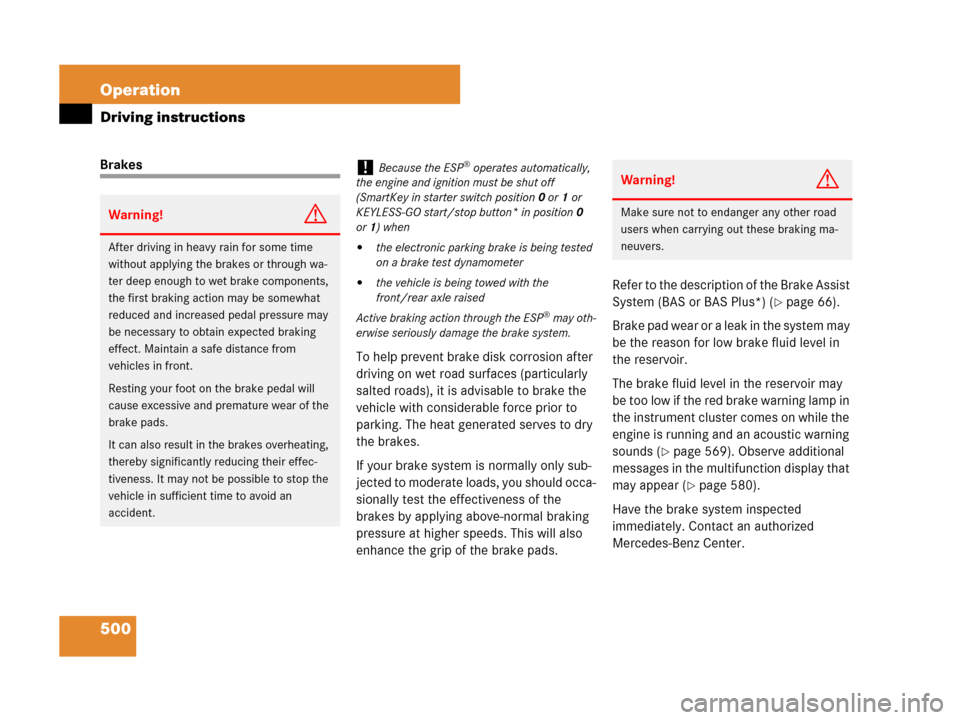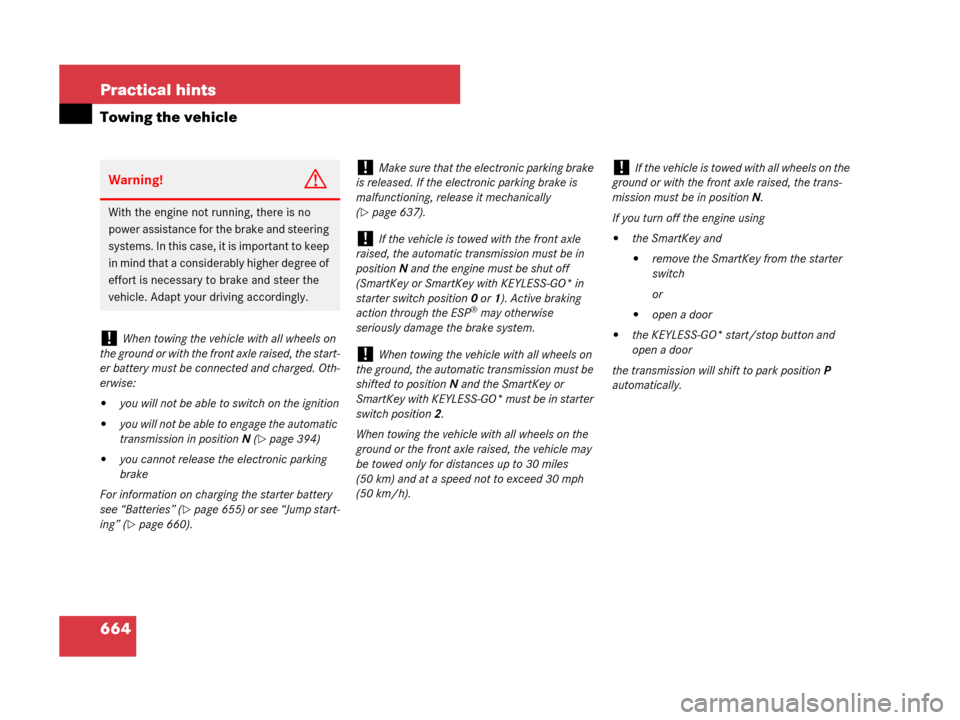Page 398 of 723

397 Controls in detail
Automatic transmission
Rocking the vehicle
Rocking the vehicle by shifting between
drive positionD and reverse gearR can
help free a vehicle stuck in mud or snow.
The engine control system of this vehicle
electronically limits shifting between drive
positionD and reverse gearR to very low
speeds, i.e. approximately 5 mph
(9 km/h). To shift between drive
positionD and reverse gearR, move the
gear selector lever past the resistance
point up or down.
Working on the vehicleHill start assist system
On uphill grades with a gradient angle of
more than 5°, the hill start assist system
maintains the pressure in the brake sys-
tem for approximately 1 second after you
have released the brake pedal. Therefore,
you can start off smoothly without the
vehicle moving immediately after releasing
the brake pedal.The hill start assist system is inactive
�when starting off on a level road or
downhill grades
�with the transmission in neutral
position N
�with the electronic parking brake en-
gaged
�if the ESP® has switched off due to a
malfunction
Warning!G
When working on the vehicle, engage the
electronic parking brake and shift to park
positionP. Otherwise the vehicle could roll
away.
Warning!G
The hill start assist system is not designed
to function as a electronic parking brake and
does not prevent the vehicle from moving
when parked on an incline.
Always engage the electronic parking brake
in addition to shifting to park positionP.
Page 503 of 723

500 Operation
Driving instructions
Brakes
To help prevent brake disk corrosion after
driving on wet road surfaces (particularly
salted roads), it is advisable to brake the
vehicle with considerable force prior to
parking. The heat generated serves to dry
the brakes.
If your brake system is normally only sub-
jected to moderate loads, you should occa-
sionally test the effectiveness of the
brakes by applying above-normal braking
pressure at higher speeds. This will also
enhance the grip of the brake pads.Refer to the description of the Brake Assist
System (BAS or BAS Plus*) (
�page 66).
Brake pad wear or a leak in the system may
be the reason for low brake fluid level in
the reservoir.
The brake fluid level in the reservoir may
be too low if the red brake warning lamp in
the instrument cluster comes on while the
engine is running and an acoustic warning
sounds (
�page 569). Observe additional
messages in the multifunction display that
may appear (
�page 580).
Have the brake system inspected
immediately. Contact an authorized
Mercedes-Benz Center.
Warning!G
After driving in heavy rain for some time
without applying the brakes or through wa-
ter deep enough to wet brake components,
the first braking action may be somewhat
reduced and increased pedal pressure may
be necessary to obtain expected braking
effect. Maintain a safe distance from
vehicles in front.
Resting your foot on the brake pedal will
cause excessive and premature wear of the
brake pads.
It can also result in the brakes overheating,
thereby significantly reducing their effec-
tiveness. It may not be possible to stop the
vehicle in sufficient time to avoid an
accident.
!Because the ESP® operates automatically,
the engine and ignition must be shut off
(SmartKey in starter switch position0 or1 or
KEYLESS-GO start/stop button* in position0
or1) when
�the electronic parking brake is being tested
on a brake test dynamometer
�the vehicle is being towed with the
front/rear axle raised
Active braking action through the ESP
® may oth-
erwise seriously damage the brake system.
Warning!G
Make sure not to endanger any other road
users when carrying out these braking ma-
neuvers.
Page 667 of 723

664 Practical hints
Towing the vehicle
Warning!G
With the engine not running, there is no
power assistance for the brake and steering
systems. In this case, it is important to keep
in mind that a considerably higher degree of
effort is necessary to brake and steer the
vehicle. Adapt your driving accordingly.
!When towing the vehicle with all wheels on
the ground or with the front axle raised, the start-
er battery must be connected and charged. Oth-
erwise:
�you will not be able to switch on the ignition
�you will not be able to engage the automatic
transmission in positionN (
�page 394)
�you cannot release the electronic parking
brake
For information on charging the starter battery
see “Batteries” (
�page 655) or see “Jump start-
ing” (
�page 660).
!Make sure that the electronic parking brake
is released. If the electronic parking brake is
malfunctioning, release it mechanically
(
�page 637).
!If the vehicle is towed with the front axle
raised, the automatic transmission must be in
positionN and the engine must be shut off
(SmartKey or SmartKey with KEYLESS-GO* in
starter switch position0 or1). Active braking
action through the ESP
® may otherwise
seriously damage the brake system.
!When towing the vehicle with all wheels on
the ground, the automatic transmission must be
shifted to positionN and the SmartKey or
SmartKey with KEYLESS-GO* must be in starter
switch position2.
When towing the vehicle with all wheels on the
ground or the front axle raised, the vehicle may
be towed only for distances up to 30 miles
(50 km) and at a speed not to exceed 30 mph
(50 km/h).
!If the vehicle is towed with all wheels on the
ground or with the front axle raised, the trans-
mission must be in positionN.
If you turn off the engine using
�the SmartKey and
�remove the SmartKey from the starter
switch
or
�open a door
�the KEYLESS-GO* start/stop button and
open a door
the transmission will shift to park position P
automatically.